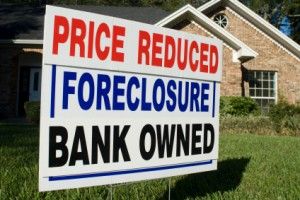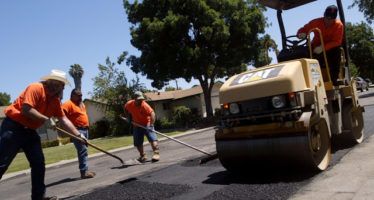County, city mortgage grabs could spark new housing crisis
By Wayne Lusvardi
In San Bernardino, the county has approved using eminent domain to seize bank-owned pools of “underwater mortgages” to get the county out of its over-indebted housing stagnation. The city of San Bernardino has the second highest poverty rate in the United States, after Detroit.
The cities of Fontana and Ontario have also approved joining the program. The city of Hesperia, however, rejected the idea. But such a bailout of underwater mortgages is likely to result in a number of foreseeable negative unintended consequences.
What happens if the county buys up underwater mortgages, but home values plunge again due to a double-dip recession triggered by an economic disaster, perhaps the European debt crisis? Economist Gary Schilling, who has called every recession correctly since the 1970s, is forecasting another 20 percent drop in national housing prices in 2012.
But this isn’t deterring those like John Husing, the chief economist for the Inland Empire Economic Partnership in San Bernardino, from promoting the notion of using eminent domain to acquire underwater mortgages and re-sell them to hedge funds.
Use of eminent domain to force loan write downs is the apparent brain child of Cornell University Professor of Law Robert C. Hockett in his June 2012 paper, “It Takes a Village: Municipal Condemnation Proceedings and Public/Private Partnerships for Mortgage Loan Modification, Preservation and Local Economic Recovery”.
Investopedia.com defines an underwater mortgage as “a home purchase loan with a high balance owed than the free market value of the home” on the open market. Homeowners with underwater mortgages typically cannot resell their homes unless they can come up with the cash to pay the loss off.
The median single-family home price in San Bernardino County is $158,500, as of May 2012. The median home price in San Bernardino-Riverside Counties as of 2007 was $343,250. This reflects a 53.8 percent decline in value from the peak of the Housing Bubble.
Steven Gluckstern of Mortgage Resolution Partners, a private hedge fund proposing to batch the mortgages and re-sell them at a discount, says that roughly $1 billion would need to be financed to initiate eminent domain proceedings on 5,000 underwater mortgages. The homes themselves would not be condemned. That would reflect roughly $200,000 per home in loan write down needed.
Consider a home with, say, $315,000 loan balance as of 2012 — 50 percent its original value. In that case, a 60 to 70 percent loan discount would be indicated to provide a third-party investor a 10 to 20 percent profit. But this would result in a sale at less than the median home value of $158,500 today. It is not clear if homeowners would lose their rights to any future appreciation in their home as part of this deal. If so, perhaps the entire property would need to be condemned as well.
A Redevelopment Agency for Over-Indebted Homes
The proposal to acquire underwater mortgages comes from Mortgage Resolution Partners, a San Francisco based group of venture capitalists. Mortgage Resolution Partners is led by CEO Graham Williams, who created Bank of America’s “award winning” Neighborhood Advantage low-income housing initiative. Bank of America’s Neighborhood Advantage Program was essentially a “zero down” sub-prime loan program.
Reportedly, 150,000 homeowners have underwater mortgages in San Bernardino County. About 20 percent of those mortgages — or 30,000 loans — are held in private mortgage-backed securities that could be acquired by eminent domain. The eminent domain process would be funded privately. The re-selling of mortgages to hedge funds would be handled by private venture capitalists for a profit. But the county would hold the mortgages in a public/private joint powers agency. Call it a “redevelopment agency for over-indebted homes.”
Eminent domain legal expert Gideon Kanner believes that eminent domain law is so broad in California that it could be stretched to allow the acquisition of underwater mortgages and still meet the legally required “public benefit” test.
Technically speaking, however, it is likely that a city could only legally condemn that portion of a mortgage that was “underwater” and not the whole loan. It would be unlikely that a “public benefit” could be justified for taking the portion of the loan that is not “underwater.” This would be what is called a “partial taking” or “fractional interest taking.” How that could be determined on 5,000 to 30,000 mortgages could be a logistic nightmare.
A ‘Lousy Idea’
But Kanner stated on his blog that this is a “lousy idea for a number of policy reasons”:
First, the county as condemnor would have to come up with the money to acquire the mortgages by a public-private partnership that would issue some sort of mortgage revenue bond. Public-private partnership is a code word for what used to be called “redevelopment” in California until Gov. Jerry Brown and the state Legislature shut down redevelopment agencies in 2011.
Second, the standard for “just compensation” in eminent domain is Fair Market Value. But banks and private mortgage lenders hold mortgages on their books for their higher “book value.” The open market value of the homes serving as collateral for an underwater mortgage would be lower than the “book value” of the loans.
But you can’t use eminent domain law to acquire a home, or a mortgage, “on the cheap” at less than the balance owed on the loan. The concept of just compensation is to “make the property owner whole.” So eminent domain probably can only be used to force banks to sell their loans at full book value, not at a discounted value.
Nonetheless, mortgage loans would have to be sold at a discount in order for private investors to make a profit. Thus, the county would have to be willing to buy loans at their face value and sell them for much less. The spread is called a discount, which reflects the margin of profit to the seller of the loans.
Steve Body, a commercial real estate appraiser and securities trader in Eagle Rock, California, stated that the expected discount on underwater mortgages would probably not be as low as the typical 10 to 12 percent in bankruptcy court. He said it would also not be as high as 50 percent found in highly distressed assets. That is because most homeowners with underwater mortgages are making their loan payments. He believed a discount in the 20 to 40 percent range would be typical. But Body stated that, paradoxically, if a public entity buys and guarantees payment on the loans, there would be less risk and thus less of a discount or profit for investors.
Both Body and Kanner mentioned that there would be another big impediment for banks selling their loans even at their full book value. Coercing banks to sell a portion of their loan portfolio might drop bank reserves to less than the minimum reserve of stress tests required by bank regulators.
Body cautioned that another impediment for banks could be what is called “fractional interest banking,” where banks loan out the same money, say, seven or eight times. Could banks demand just compensation for the lost opportunity cost of a multiple of the book value of the loans? What bank would agree to a voluntary condemnation of their underwater mortgages and forego such profits?
Kanner warned of a repeat of the Savings and Loan Crisis of the 1980’s and early 1990s, when savings and loan banks had to sell their junk bonds at fire-sale prices by order of the federal government. This resulted in the collapse of several savings and loan banks.
Hazard of Non-Payments
But Kanner warns of even more “calamitous consequences.” There is hazard in reducing the loan balances on mortgages if borrowers are provided an incentive to stop making payments on their mortgages, hoping to get bailed out by the government.
And then there is the potential problem of the mass flight of property owners dumping their homes once their loans are reduced — to get out of California or take better jobs elsewhere. Think of government-reduced mortgages as a one-way ticket out of San Bernardino.
And then there would be the prospective slippery slope problem that, if this were implemented in San Bernardino, where would it stop? Other distressed counties would be politically pressured to reduce all the underwater mortgages in their jurisdictions, too. A house of cards could result in the entire housing market collapsing.
And loans would likely be re-sold into a mortgage market at the same time as the federal government is dumping foreclosed homes on the market.
The proposal to use eminent domain to reduce over-indebted homes is filled with multiple unintended negative consequences. But these consequences are foreseeable and thus potentially avoidable. Desperate cities should beware of hedge funds offering bailouts.
Related Articles
Root Canal For Single-Payer Health Bill
JAN. 26, 2012 By KATY GRIMES Despite warnings that tooth decay in children can lead to a life in prison,
How to fund infrastructure fixes: Tax hikes or rearranging spending priorities?
Gov. Jerry Brown and Democratic legislators are pitching a transportation-tax proposal they depict as the only means to fix California’s
Fallows cites CWD critique of his bullet-train stand
The Atlantic’s James Fallows, to his credit, followed up on his post last week touting the California bullet train project





